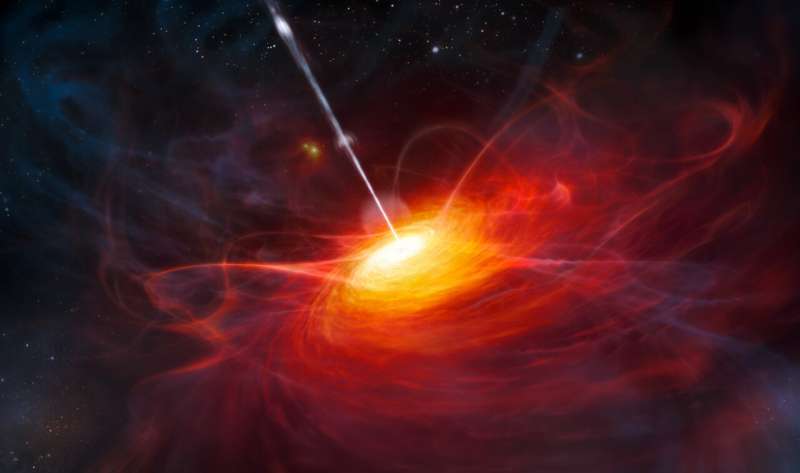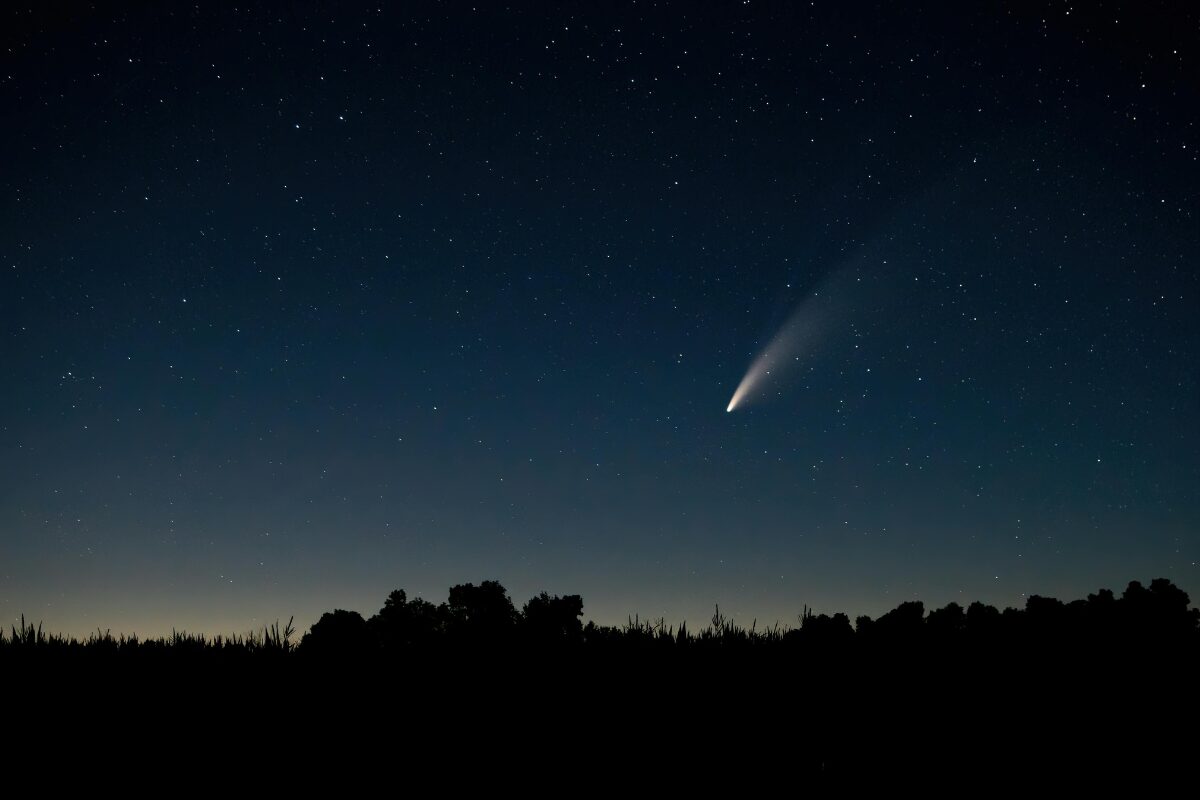An international team of astronomers has identified ID830 as the most X-ray luminous radio-loud quasar known to date. Their findings, published on November 7, 2025, on the pre-print server arXiv, reveal significant insights into this distant quasar, which is located at a redshift of 3.43.
Quasars, or quasi-stellar objects, are active galactic nuclei powered by supermassive black holes (SMBHs). They exhibit exceptionally high bolometric luminosities, often exceeding one quattuordecillion erg/s, emitting electromagnetic radiation across various wavelengths including radio, infrared, visible, ultraviolet, and X-ray.
ID830’s Extraordinary Luminosity
ID830, also known as eFEDS J084222.9+0010000, has a bolometric luminosity estimated at around one quindecillion erg/s. This remarkable luminosity suggests that it either hosts an extraordinarily massive SMBH, nearing the maximum mass limit of 10 billion solar masses, or is in a super-Eddington accretion phase.
A research group led by Sakiko Obuchi from Waseda University in Tokyo conducted a multiwavelength study of ID830, combining data from the Spektr-RG satellite’s eROSITA X-ray spectroscopy, along with extensive observations from ground-based telescopes such as SDSS, Subaru/MOIRCS, LOFAR, GMRT, FIRST, ASKAP, and VLASS.
The results indicate that ID830 has an X-ray luminosity of approximately 0.01 quindecillion erg/s, categorizing it as one of the most X-ray luminous radio-loud quasars detected to date. Its bolometric luminosity is reported to be around 0.076 quindecillion erg/s, leading to an Eddington ratio of 1.4, confirming the quasar’s super-Eddington accretion status.
Insights into Quasar Evolution
The study also noted that ID830 experiences a moderate reddening of about 0.39 mag, with the mass of the supermassive black hole estimated at approximately 440 million solar masses. The quasar exhibits a notably high ultraviolet-to-X-ray luminosity ratio of -1.2, which surpasses that of other quasars and little red dots (LRDs) in the super-Eddington phase.
The LRDs are believed to be a type of early active galactic nucleus with supermassive black holes. Additionally, the estimated jet kinetic power of ID830 ranges between 1–10 quattuordecillion erg/s, which is comparable to its radiative luminosity. This suggests an efficient coupling of mechanical energy from the quasar’s jet to the host’s interstellar medium.
The researchers concluded that ID830 is currently in a transitional phase, where both the corona and jet are energized following an accretion burst. They suggest that it may represent a post-burst super-Eddington quasar, bridging the gap between sub-Eddington quasars and the recently identified X-ray weak, rapidly accreting ‘little red dots’ observed by the James Webb Space Telescope (JWST).
The discovery of ID830 offers profound implications for understanding the evolution of quasars and the dynamics of supermassive black holes, as well as their role in the early universe.







